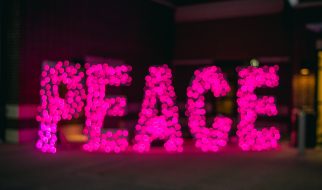It led me to the miracle I discovered for weight loss, the end of workaholism, and to greater success than ever before.

There is a tool in the toolbox for personal development that has been around for over a thousand years called the ?Wheel of Life?. You may be familiar with it if you have been exposed to life coaching or personal development for greater effectiveness in your business life. When I first learned about it, I was ?successful? in a business sense, but I was obese and working myself to death. I learned of it in a course I took to become more ?successful? in directing and managing a staff and organization. Fortunately, it led me to changes that would save my out-of-balance life, and led me to the successful and highly respected weight loss plan I developed to reverse obesity, and it is now taught all over the world in weight loss programs, hospital and clinics. The ?Wheel of Life? was a very important discovery for me.
Below is an example of it you may be familiar with, created by Paul Meyer, creator of Success Motivation Institute and one of the originators of what has become ?Life Coaching?. He is credited as the creator of the modern day version of the wheel of life and a pioneer in the business of personal development and life coaching.
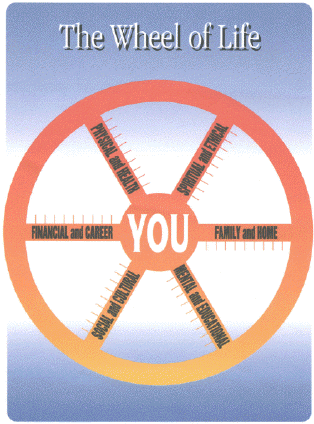
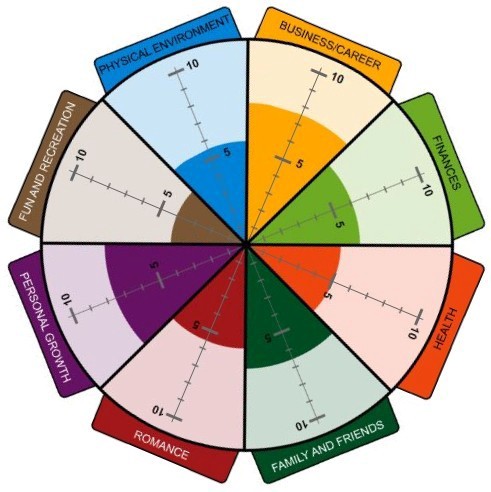
This has been a useful tool when life has gotten out of balance, such as suffering from workaholism, getting burned out, or generally being unsatisfied and not sure why. It?s been very effective in helping people to become more effective and satisfied with their life even if they are not burned out or unhappy. The idea is to identify the areas, dimensions or aspects of your life and arrange them as areas or spokes around a wheel.
The circle represents your life, the whole of you. The pieces of the pie, or spokes, are the parts your life: the areas, roles, or aspects of the whole. You assess those aspects and create a graphic like the one here to see how balanced your life is. Below are some more examples.

You can see, depending on the version, that some wheels have more and varied aspects. The nature of the aspects are up to you and usually identify parts, areas, roles, needs or dimensions of your life.
Again, the idea is to assess these parts of yourself or your life to see if there are important things you?ve been neglecting, or things you?ve been giving too much of yourself to.
Here are a few more examples.
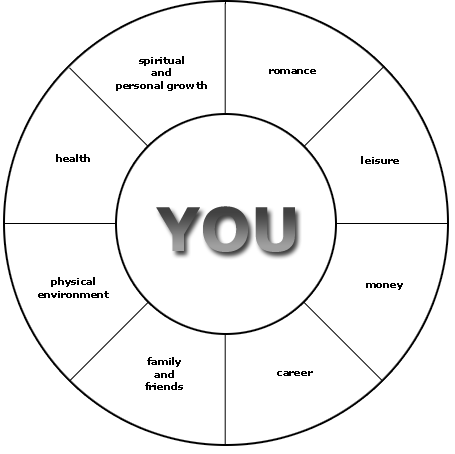
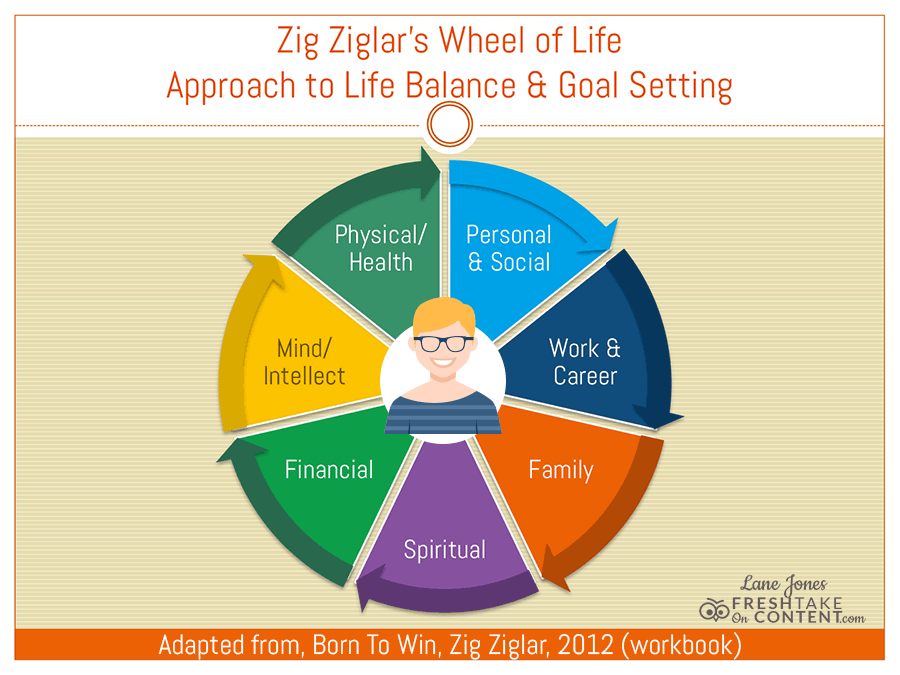
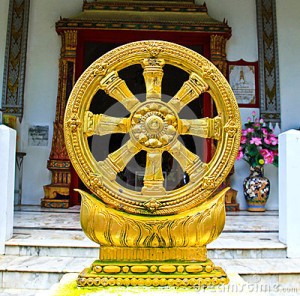
This last one is the oldest example, one of many Buddhist wheels of life. The wheel model or symbol is said to have been used by the Buddha as a tool to teach his students his lessons of enlightenment. This one represents Buddha?s eight-fold path, perhaps inspiring Meyer?s ?paths?.
What?s The Purpose?
Today, the tool is used mainly to identify what we need to do when life is out of balance, for instance, when the wheel shows us that all our attention is going to work and we are ignoring our health or needs for fun and recreation. The second illustration shows the wheel out of balance. This tool is usually used in goal-setting exercises, to help us be more balanced when we set goals.
But, what is the goal and purpose of life? To set and attain goals? Success? Is life a game where winning is a matter of the goals attained, and the more the better? Or is it something else? Is it not to enjoy happiness, bliss, to be content, satisfied and happy with yourself and life? To truly thrive? Isn?t that the success we seek?
Centered and Whole
The purpose of the wheel of life exercise is to make sure our wheel, the whole of our life, is balanced, all aspects or needs fulfilled in the right way. When one aspect of your life becomes the focus and the others are neglected, the wheel is out of balance. We know what happens to an out-of-balance wheel. It gets wobbly and is likely to crash. Our wheel, your life, needs to be balanced around the center. But what?s at the center of your life, the most important thing?
We know, from experience, that success in any endeavor seems to demand a ?Singleness of Purpose?, as Rev. Charles Marriott taught in 1852. To succeed, we need to focus on that one thing and give it ?our all?. We falter when we are scattered, going in all directions and getting nowhere. The question is, what is it that we should give ?our all? to?
Certainly, we know that if work is the most important thing and you are ignoring your health or your family, it?s unhealthy and can be disastrous. It can be the same if religion or your social community is the priority. If family is first, to the exclusion of your own well being, that?s also disastrous.
The one thing that promises to deliver balance is to make wholeness the singular focus and goal. ?Whole? is the origin of the word ?health?, but it is more than the health of the body. It is about the health of the psyche, mind and spirit, in harmony with existence itself, your spirit one with the spirit of life.
I?ll bet you have been advised to take time to get centered, maybe in an exercise of meditation. The Yogis have forms of Yoga (union) they practice to get centered properly, to become one with the ?absolute?, the ultimate Cosmic Reality. Other religions teach us to find solutions by surrender to a Higher Power, putting God first, making that relationship central, the real healing we need, real wholeness. Some teach to let go of selfish desires to be happy and free of suffering. More modern psychologists (students of the psyche, the mind or soul) talk of the life tasks of self-identity, spirituality, the need for self-actualization, and coming to terms with the cosmos.
Regardless of your thoughts about the spirit part of body, mind and spirit, you know that being self-centered or centered on one part of your wheel is unhealthy and unbalanced. Make wholeness, real health, your singular purpose and get centered on what?s really at the center of your being. You might find that balance starts happening on it?s own.
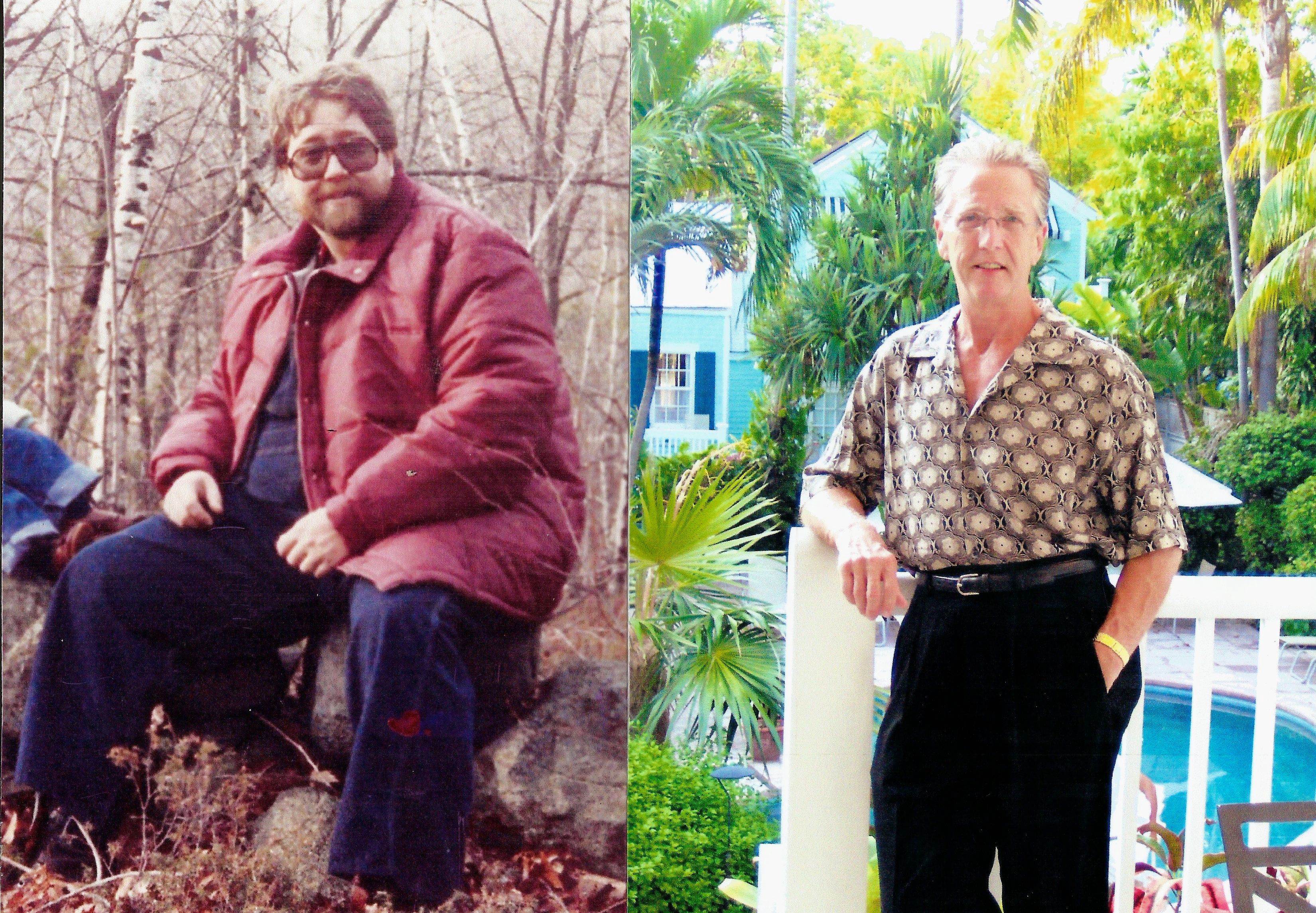
William Anderson is a Licensed Mental Health Counselor, the author of ?The Anderson Method of Permanent Weight Loss? (paperback and Kindle at Amazon, audiobook at Audible). He was obese until his early thirties when he found the solution. He lost 140 pounds, has kept it off for 35 years, and has taught thousands to successfully manage their weight.

